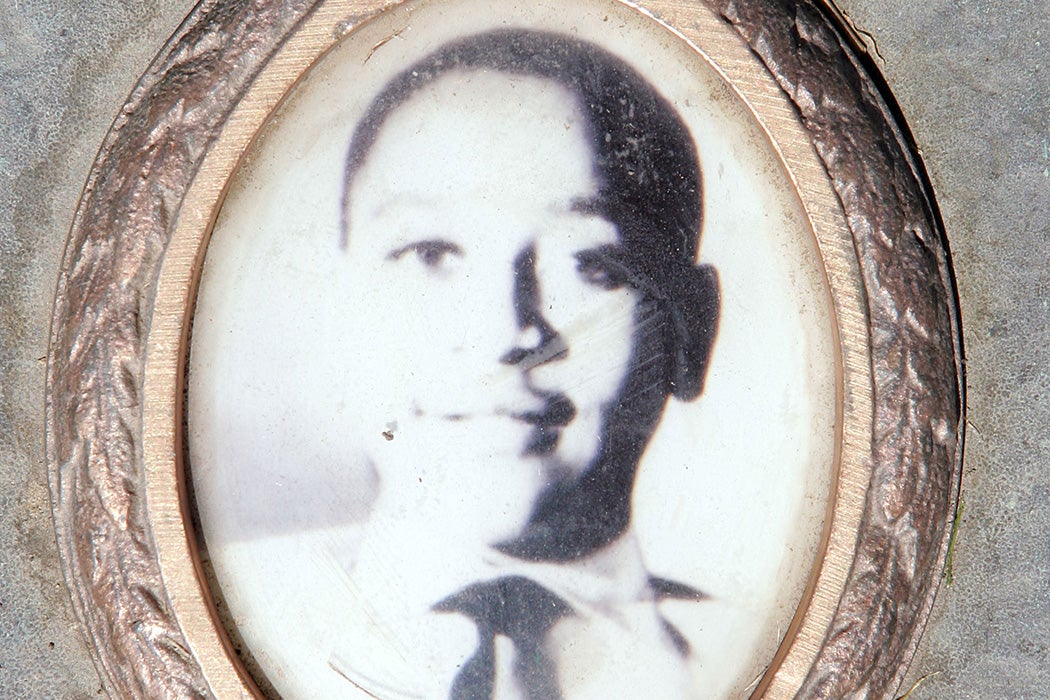August 28 marks the anniversary of the 1955 lynching of Emmett Till in Mississippi, a crime so brutal that it galvanized support for the modern Civil Rights Movement among Black Americans.
Till was a fourteen-year-old boy from Chicago visiting relatives near Money, Mississippi, in August 1955. After an interaction with a white woman, Carolyn Bryant—the exact nature of which is unclear—he was abducted at night by two men, Roy Bryant (Carolyn’s husband) and J. W. Milam. The two white men tortured and mutilated the boy, dumping his body into the Tallahatchie River.
According to communications scholar Davis W. Houck, local newspapers helped create the public opinion that influenced the acquittal of the two men. “The first five days of the Mississippi press’s coverage of the Till case are key to understanding the rhetorical trajectory of what would follow,” writes Houck. ” “While it is clear that the kidnap and murder were initially understood and even emphasized in racial terms,” he explains, “there was a profound sorrow […] for what had happened to the boy from Chicago.”
Early on, for example, one paper editorialized that the lynching “dealt the reputation of the South and Mississippi a savage blow.” The paper said that if Bryant and Milam weren’t convicted, the state might as well throw out its law books and close its courts. But that perspective shifted after Till’s mother, Mamie Till Bradley, insisted on an open-casket funeral in Chicago, to let “the world see” what had been done to her son. White Mississippians became defensive. Suddenly, they claimed that the NAACP and other “outside agitators” were smearing their reputation. And soon after Bradley was quoted saying that going to Mississippi was “like walking into a den of snakes,” sympathetic editorializing changed.
White Mississippi newspapers started firing off rebuttals. Till’s lynching had “made our section the target of unjustifiable criticism, thoughtless accusations, and avenging threats,” one said. Pictures of Bryant and Milam, smiling in their military uniforms, were published along with an article about their mother promising to stand by them. Carolyn Bryant was represented by a beauty pageant photograph. Till was portrayed as “husky,” “stuttering,” an arrogant Black kid from the North.
Remarkably, an all-white grand jury did indict Bryant and Milam on murder charges, but the press helped influence the outcome of the trial. The most “progressive” paper in the Mississippi market, the Delta Democratic-Times, chastised both the NAACP and the “friends” of the accused killers: each was whipping up a frenzy over the affair. That was what passed for moderate. As Houck writes, other “papers had so inflamed passions among white Mississippians that three key witnesses left the state” for fear of retribution.
Weekly Newsletter
Carolyn Byrant, lionized as a symbol of white womanhood and motherhood in the press, would have her testimony be ruled inadmissible by the judge, so the jury never heard it. But the press published it, stoking the fires of racism with the fuel of white supremacy: the fear of Black male sexuality.
The jury, made up of twelve white men, found the suspects not guilty in sixty-seven minutes. Six weeks later, a grand jury refused to return an indictment on the kidnapping charges. For $4,000, Bryant and Milam would tell Look magazine they kidnapped and murdered Till because he didn’t know his “place.”
Years later, Carolyn Bryant would admit she had lied about what happened.







